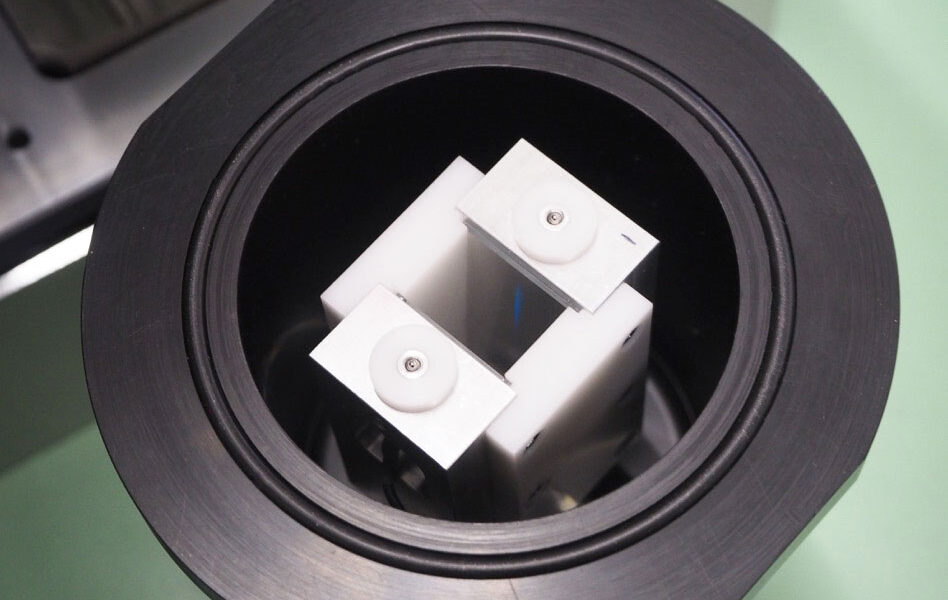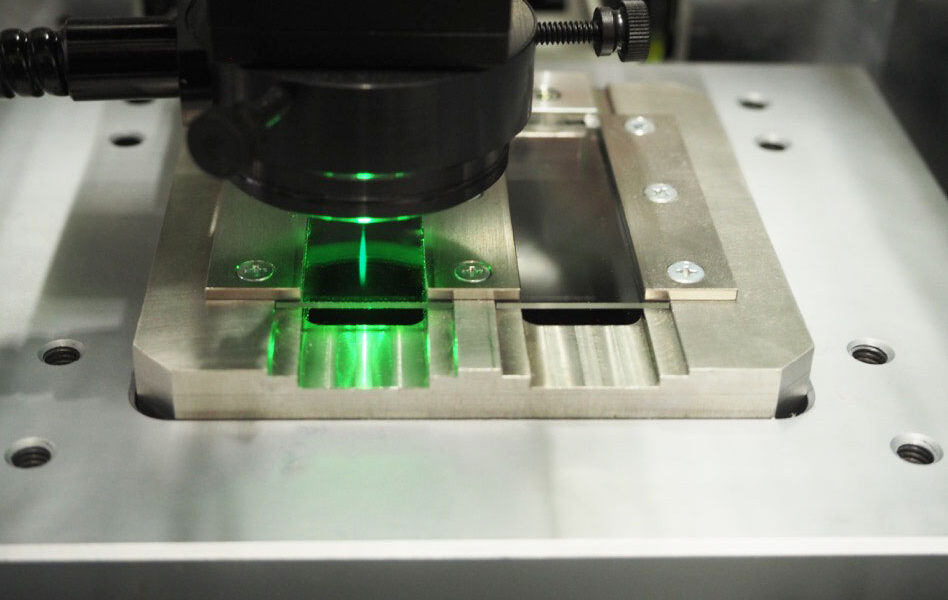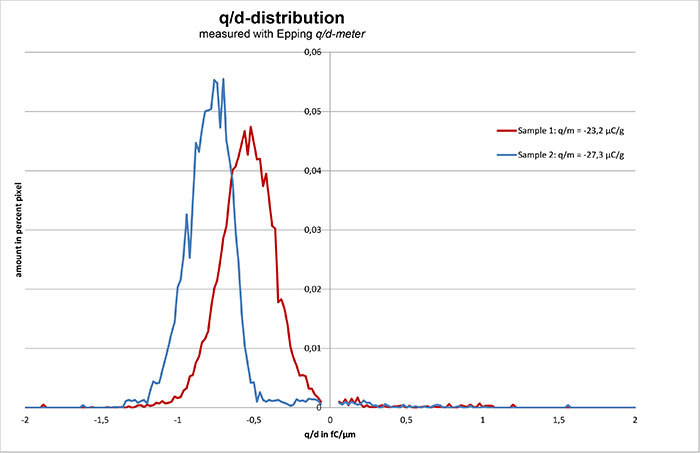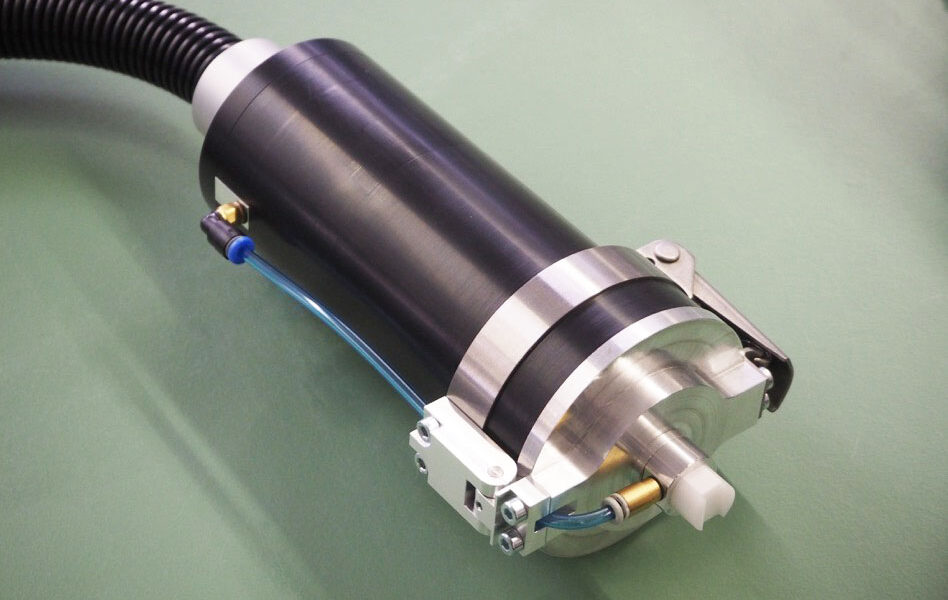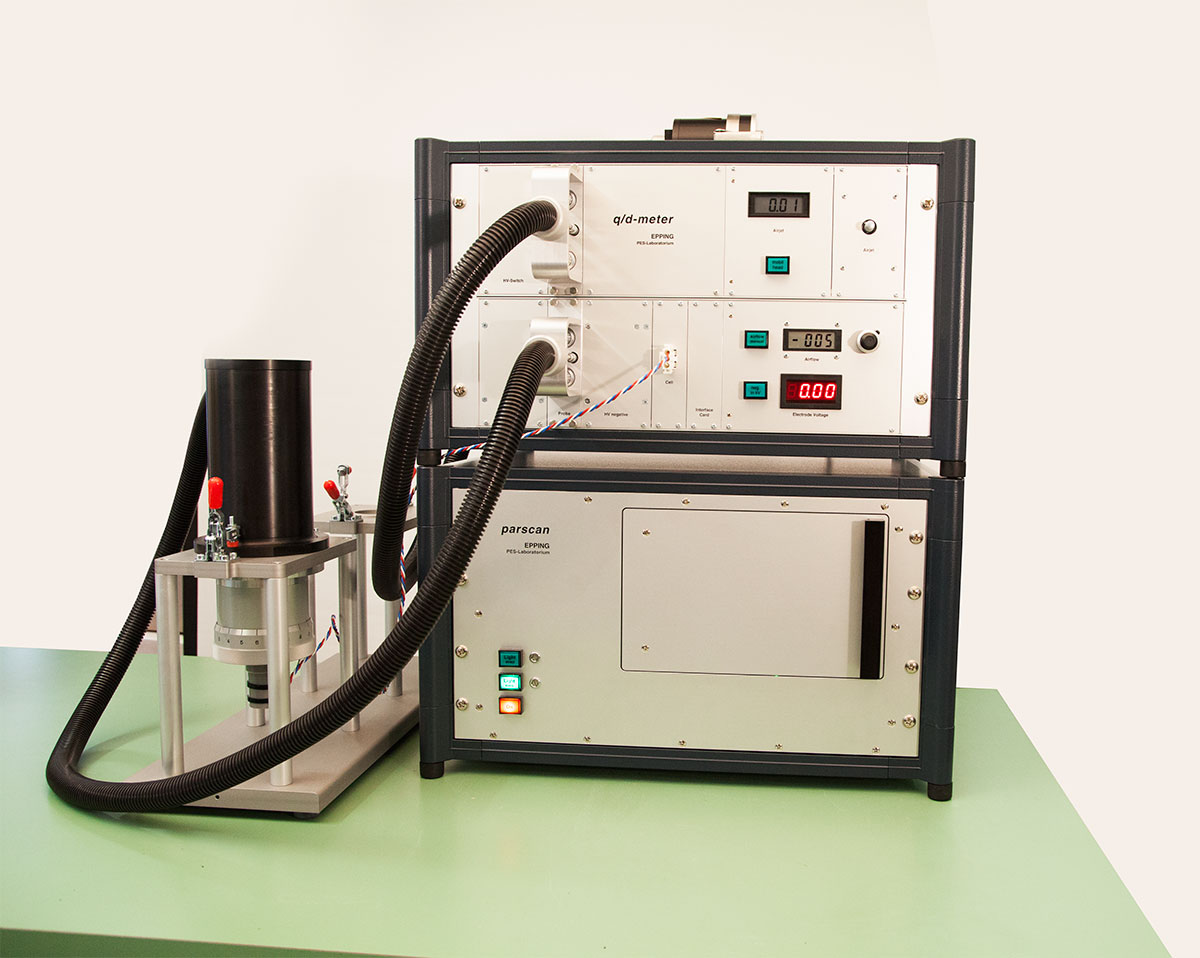
q/d-meter – Charge spectrometer
The charge spectrometer q/d-meter (former q-test) measures the charge distribution q/d in fC/µm of dry particles. The distribution provides more detailed information about the charging characteristics of the particles. It determines the quantity of wrong signed particles and the low -high charging properties. This information is essential during the R&D of new materials and components and to understand the process.
The measurement principle used is an indirect method based on the deflection of a charged particle in an electric field. The deflection is related to the charge, and respectively the charge to diameter ratio of the particles.
Standard measurement head with toner deposition
The q/d-meter consists of 2 separate devices, the q/d-meter deflection unit with measurement head and the parscan scanning device with microscope for image analysis and evaluation.
In the measurement head, the particles travel in a non-turbulent free air jet into a crosslinked electric field. The charged particles are deflected toward the electrodes of the E-field, and are finally caught on glass slides placed on the electrodes. The deflection depends on the charge (q/d ratio) and the polarity of the particle.
parscan scanning table with glass
The glass slides are automatically scanned in the parscan device. The deposition points of the particles are used to calculate their q/d values. Particle diameter can also be evaluated when particles are separated on the glass, means they should not touch each other.
Available results include the
- q/d distribution (charge per diameter of the particles)
- q distribution related to diameter q(d)
- q/d distribution related to diameter q/d(d)
- q/d² distribution (charge per surface area)
- q/m distribution (charge per mass)
“diameter distribution (number and volume)”
mobile head for q/d-meter
System hardware
- 2 bench top measurement devices (can be stacked on top of each other)
- Measurement heads
- Standard with dual-component activation cell for developers
- Mobile head to sample from surfaces such as OPC, developer sleeve
- Controlled airflow and electrode voltage
- Box-PC with Windows® OS
Software
- Specifically designed to work with the q/d-meter compatible with Windows®
- Dialog controlled for easy operation
- Fully automated measurement and scanning cycles
Interface
- q/d-meter 1 x USB
- parscan 1 x USB and 1 x RJ-45 GigE camera
Electrical requirements
- 110 VAC to 230 VAC ± 10% @ 50/60 Hz
- 2 x 0,2 kW power consumption
Environment
- Temperature 10 – 40 °C (50 – 104°F)
- Humidity 10 – 70 %rH (non condensing)
Dimensions and weight
- q/d-meter L 550 x H 330 x D 400 mm / weight 22 kg
- parscan L 550 x H 330 x D 400 mm / weight 32 kg

